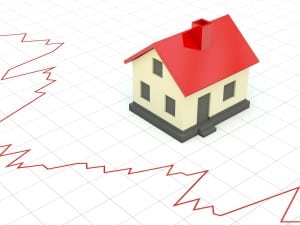U.S. home resales rebounded more than expected in March, suggesting the housing market recovery remained intact despite signs that economic growth probably stalled in the first quarter.
The National Association of Realtors said on Wednesday existing home sales surged 5.1 percent to an annual rate of 5.33 million units last month. Economists polled by Reuters had forecast sales rising 3.5 percent to a 5.30 million-unit pace.
Sales were up 1.5 percent from a year ago.
Existing home sales rose in all four regions last month, jumping 11.1 percent in the Northeast and accelerating 9.8 percent in the Midwest.
U.S. financial markets were little moved by the report. The PHLX housing index .HGX was down 0.28 percent. Shares in the nation’s largest homebuilder, D.R. Horton Inc., fell 0.20 percent and shares of Lennar Corp. slipped 0.40 percent.
A separate report from the Mortgage Bankers Association showed mortgage applications last week rose to their highest level in nine weeks as interest rates on 30-year fixed-rate mortgages hovered at their lowest level in more than a year.
Despite a report on Tuesday showing a plunge in housing starts and building permits in March, housing remains a bright spot amid indications that economic growth slowed to a crawl in the first three months of the year.
Though residential construction only accounts for a small share of GDP, housing has a broader reach in the economy, which should help to sustain growth this year.
The economy has been hobbled by a strong dollar and weak global demand, which have undermined exports. Lower oil prices are also a drag as they have eroded the profits of energy firms, prompting them to slash spending on capital projects.
First-quarter gross domestic product growth estimates are currently as low as a 0.2 percent annualized rate. The economy grew at a 1.4 percent rate in the fourth quarter.
Housing is being supported by a buoyant labor market, which has resulted in an acceleration in household formation. Sales, however, remain constrained by a dearth of homes available for sale, which is limiting choices for buyers.
The number of unsold homes on the market in March rose 5.9 percent from February to 1.98 million units. Supply was, however, down 1.5 percent from a year ago.
At March’s sales pace, it would take 4.5 months to clear the stock of houses on the market, up from 4.4 months in February. A six-month supply is viewed as a healthy balance between supply and demand.
Despite the improvement in supply, the median house price increased 5.7 percent from a year ago to $222,700 last month.
The rise in house prices is outstripping wage gains. While that could make home purchasing expensive for first-time buyers, it is boosting equity for homeowners, which could encourage them to put their homes on the market.
Realtors and economists say insufficient homeowner equity has contributed to the tight housing inventories.
Last month, the share of first-time buyers was 30 percent, unchanged from both February and a year ago.




 |
| 
